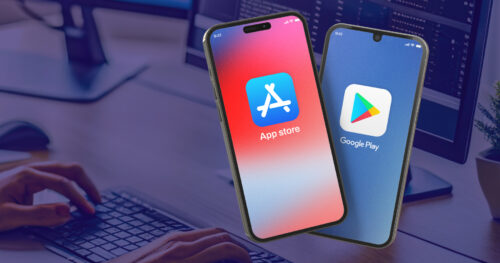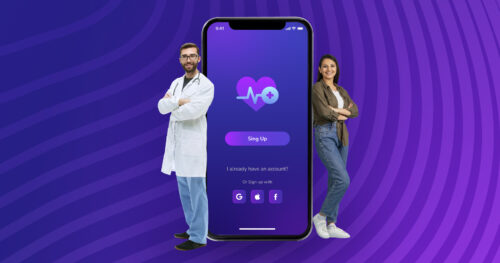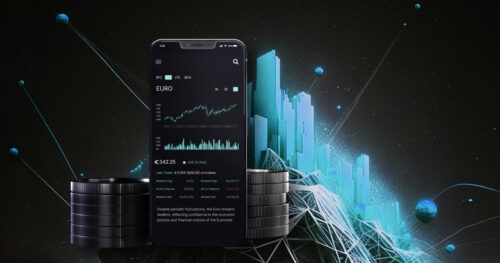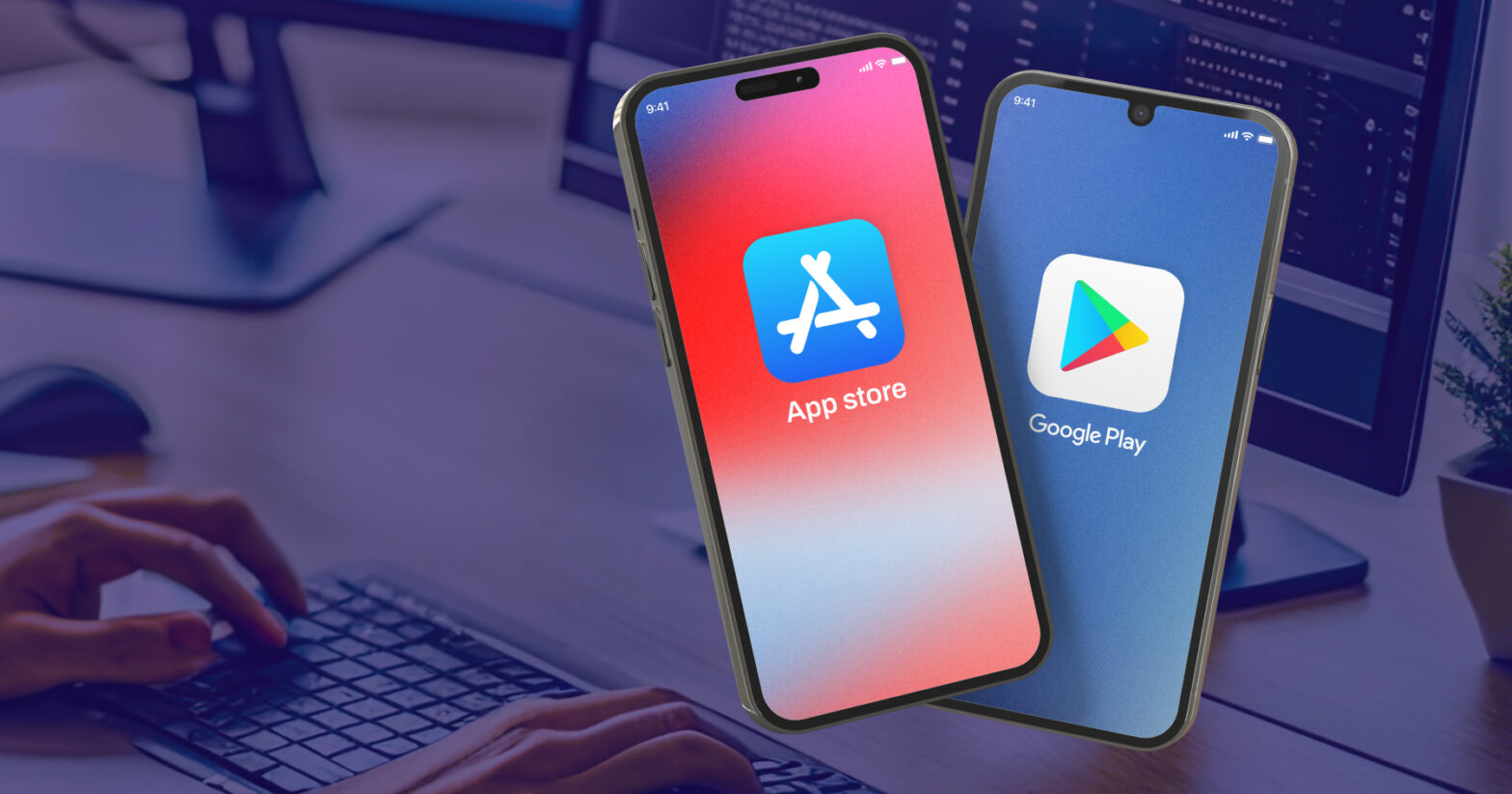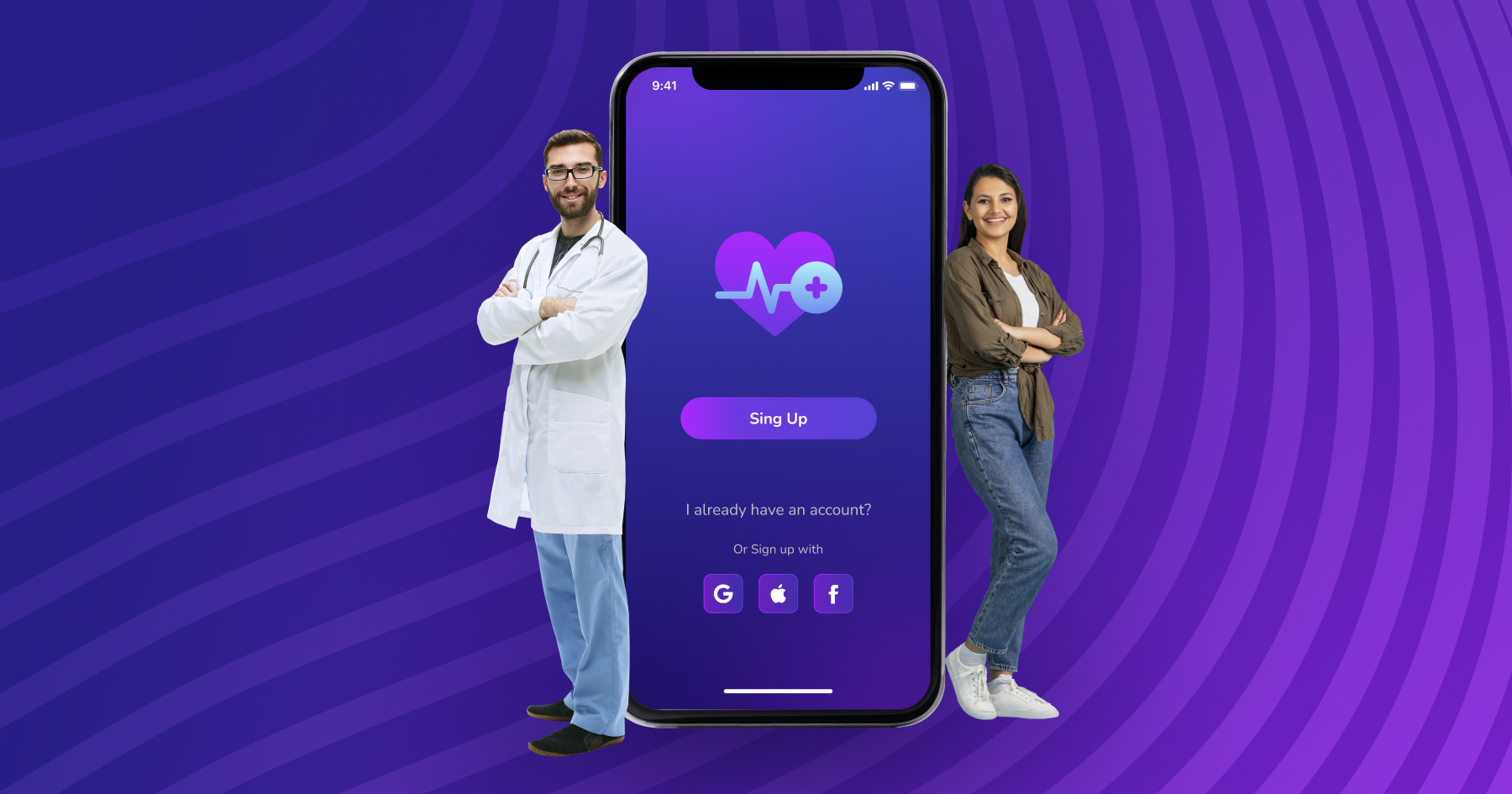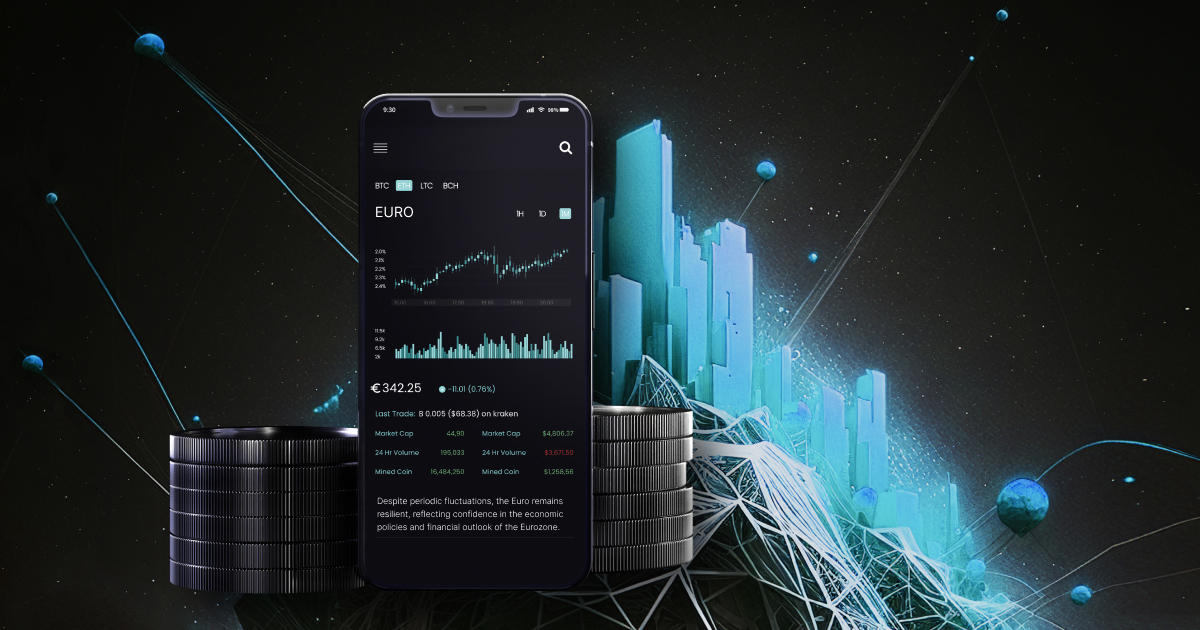Creating an architecturally sound app with a clear user flow that addresses users’ pain points is essential, but in an age of constantly evolving guidelines, it’s not enough. That’s why DigitalMara, a dedicated mobile app development company, has prepared a comprehensive guide to mobile app compliance in 2024. Regulations and guidelines not only affect your app’s compliance but also its organic visibility in app stores, ensuring it is easily discoverable and accessible to users.
Mobile apps have become an essential part of our lives, fulfilling users’ needs as widely as possible. New products appear every day. 42Matters (a Similarweb company) provides indicative mobile app statistics for 2024:
- Apple App Store: more than 1.97 million apps, over 800K publishers, 26 app categories, an average of 1074 new apps released per day.
- Google Play Store: more than 2.36 million apps, over 700K publishers, 49 app categories, an average of 1055 new apps released per day.
These figures showcase the high degree of competition in the mobile market. Keep in mind that not all submitted applications are published on the first attempt or in fact published at all. To succeed in such conditions, developers must adopt a proactive and vigilant approach to understanding and staying updated on the guidelines of app stores.
In the realm of iOS development and Android development, submitting an app to either of the big outlets — Apple App Store and Google Play Store — requires strict adherence to each store’s guidelines. While these platforms share some basic requirements, they also have unique features and specific compliance standards. Cross-platform development allows developers to use a single codebase, speeding up the development process. However, ensuring that the app conforms to the guidelines of both Apple and Google can be quite challenging.
Mobile app prototyping is a crucial phase in mobile app development that allows developers to visualize and test functionalities and gather user feedback before putting out a full-fledged product. Prototype submission has some specifics. Apple and Google both provide opportunities for public beta testing. However, both stores still perform basic reviews to check for significant issues or violations of their guidelines. And prototypes must still comply with key guidelines, especially on user privacy and data security.
Ensuring long-term success and compliance with guidelines involves diligent mobile app maintenance. Regular updates are essential to address security vulnerabilities, fix bugs, and enhance functionality, thereby maintaining user trust and satisfaction. And of course to support the latest iOS and Android versions and devices.
Apple App Store and Google Play Store guidelines
There are several nuances in mobile app verification. Applications from new publishers undergo manual verification. If a publisher has existing apps with high ratings, their new submissions may be checked automatically, reducing review time. Updates to existing apps also take less time to verify. However, any app, regardless of the publisher’s history, can be randomly selected for manual verification to ensure ongoing compliance with store policies.
The app stores’ guidelines for 2024 are extensive and cover a wide range of aspects. For the purpose of this article, we have distilled the key points. These guidelines have significant implications for mobile app development, providing developers with a framework to follow.
Here is the list of main guidelines in 2024:
Apple App Store |
Google Play Store |
||
| App review guidelines | Outline the criteria that Apple uses to review apps submitted to the App Store. They cover a wide range of topics, including safety, performance, business, design, and legal aspects, to ensure that apps are reliable, perform well, and provide a positive user experience. | Google Play developer policy | Provides comprehensive guidelines and standards for developers to ensure that apps distributed through Google Play are safe, reliable, and provide a positive user experience. It covers content, security, user privacy, compliance, minimum functionality, and others. |
| App Store identity guidelines | Detail how developers should present their apps and brands within the App Store. They include rules on using App Store badges, icons, and product images to maintain a consistent and professional appearance. | Google Play brand guidelines | Explain how to implement Google Play branding in promotional materials, such as using logos, badges, and other brand elements properly. Provide instructions on how to localize badges for different languages and markets. |
| Apple Wallet guidelines | Explain how to integrate with Apple Wallet, including how to design passes and tickets. The guidelines cover aspects such as pass structure, barcode formats, security features, and user experience to ensure seamless integration with the Wallet app. | Google Play’s billing system | Explain how to integrate the Google Play Billing Library into the app to manage digital product purchases and subscriptions. They cover configuring product IDs, handling purchase flows, ensuring secure transaction processing, and managing user entitlements through server-side integration |
| Human Interface Guidelines (HIG) | Set a strict standard for designing a UI that is intuitive, consistent, and visually appealing. It covers layout, color schemes, typography, icons, and interaction patterns to help developers create high-quality apps. | Material Design for Android | This is a recommended approach for a consistent user experience, but not mandatory. It covers layout structures, color palettes, typography, and icons to provide a seamless user experience across various Android devices. |
| App Store promo artwork guidelines | Provide specifications for creating promotional artwork for apps. They include requirements for image dimensions, file formats, and design elements to ensure that promo graphics are clear, professional, and effective in marketing the app. | Promotional graphics requirements | Provide detailed specifications for creating clear, high-resolution promotional images, such as feature graphics and screenshots. These guidelines ensure images meet standards for size, format, and quality to effectively attract users. |
| Apple Pay marketing guidelines | Instruct developers and merchants on how to promote Apple Pay. They include rules for using Apple Pay logos, messaging, and branding elements in marketing materials to accurately represent and promote the payment service. | – | – |
How to prepare an app for submission
- Thoroughly read the App Store review guidelines and Google Play developer policy to ensure your app meets all requirements. This includes understanding content restrictions, design requirements, and functionality standards.
- Prepare the app’s metadata, including name, description, and keywords. This info is also important for your App Store Optimization (ASO) practices. Ensure that it is clear, accurate, and free from misleading claims.
- Create high-quality app icons and screenshots. Screenshots should showcase the app’s key features and user interface. You can add a promotional video for the app preview. Visual assets are also important for ASO.
- Ensure you have a clear privacy policy and comply with data privacy regulations. This policy should outline how user data is collected, used, and protected. Make sure it is easily accessible from both your app and its store listing.
- Verify that the app complies with all relevant legal requirements, including intellectual property rights and advertising regulations. Avoid using copyrighted material without permission. And ensure that any advertising within the app adheres to applicable laws and standards.
- Set up your account in App Store Connect and Google Play Console and fill in all required fields.
- Use in-store tools for mobile app testing to identify and fix issues. It’s TestFlight for iOS that allows you to distribute beta versions of your app to testers and gather feedback before the official release. And the Pre-launch Report in Google Play Console provides insights into potential compatibility issues, crashes, and security vulnerabilities on various Android devices.
- After submission, the review status can be checked on App Store Connect and Google Play Console.
App regulatory standards
Secure app development practices are emphasized, ensuring that the app adheres to the highest security protocols from the ground up. This includes implementing robust encryption methods, regular security audits, and adherence to industry best practices to safeguard user data.
The well-known GDPR for mobile apps, applicable across the European Union, requires developers to secure user data by obtaining explicit consent, providing data access and deletion options, and maintaining transparent data practices. In the United States, CCPA compliance mandates that apps provide California residents with clear information about data collection and sales and the ability to opt out of personal data sharing. For healthcare apps, HIPAA mobile compliance is critical in the U.S., requiring robust security measures such as encryption and secure user authentication to protect sensitive health information. By adhering to these regulations, developers can build apps that are legally compliant and trusted by users worldwide.
However, app regulatory standards are not limited to these three. They are distinguished by country and subject. For example, the PDPA (Personal Data Protection Act) in Singapore, the COPPA (Children’s Online Privacy Protection Act) in the USA, and the global PCI DSS (Payment Card Industry Data Security Standard).
Content
Any in-app content must follow strict rules. No violence or abuse, explicit sexual content, or any hateful, defamatory, or discriminatory material. If the app features user-generated content, it should have a strict moderation policy. That means removing any content that breaks the rules of the store.
Artificial Intelligence is widely used in mobile apps to enhance engagement and improve the user experience. AI-generated content includes images, text and other forms. Conversational AI chatbots also fall into this category. Developers must ensure this content adheres to ethical guidelines and does not include misinformation, bias, or harmful stereotypes.
The protection of a young audience requires special attention. Ensuring that apps are safe for children involves additional scrutiny. Both the Apple App Store and Google Play Store have strict guidelines to prevent the inclusion of inappropriate content, such as violence, sexual material, or any form of abuse. Data collection is also limited to those necessary for the app’s functionality. The app must obtain verifiable parental consent before collecting any personal information. This category restricts in-app purchases and subscriptions to prevent accidental spending by children.
Additionally, for example, starting January 31, 2025, the Play Store will introduce a new Child Safety Standards policy. This policy requires social and dating apps to adhere to specific standards and to self-certify compliance on the Play Console before publishing.
Since July 2023, Google Play policies have incorporated strict rules regarding Blockchain-based content. Developers can integrate features involving tokenized digital assets like NFTs (Non-Fungible Tokens) within the apps. The key requirement is transparency. Developers must clearly disclose the use of tokenized digital assets within the app description and through the financial features declaration form in Play Console. This content must not involve any form of gambling or betting mechanics unless they comply with Google’s gambling policies. Apps are not allowed to mine cryptocurrency directly on devices, but apps that manage cryptocurrency mining remotely are permitted.
As of June 2024, App Store guidelines prohibit apps from using cryptocurrencies and cryptocurrency wallets. Apps that facilitate the trading of cryptocurrencies must adhere to applicable state and federal laws. No gambling is allowed. However, apps can facilitate transactions or transmissions of cryptocurrency only if they are offered in countries or regions where the app has appropriate licensing and permissions to provide a cryptocurrency exchange.
Payments and in-app purchases
When speaking of payments, both Apple App Store and Google Play Store emphasize security, transparency, and consistency in mobile app monetization. Apps can sell premium content, virtual goods, and subscriptions. For such purchases, Google Play requires the use of the Google Play Billing System, and Apple Store has Apple’s In-App Purchase (IAP) system. Users should clearly understand what they are buying and for what price, and easily manage their purchases. There are commission fees on all in-app purchases. Both stores have the same value of 15% and 30%, depending on annual revenue from the apps.
E-commerce mobile apps for selling physical goods and services can use third-party payment systems. However, all transactions must be secured using industry-standard encryption and payment processing protocols to protect user data. The app also should provide clear and accurate product descriptions, pricing information, and terms of sale.
App Privacy Policy
The App Privacy Policy is submitted with the app to the store and reflects its main security standards. It has a more-or-less standard wording and contains the following points:
- Introduction to the company and the app.
- Data collection includes a description of all data types that the app requires from users and all methods of collecting this data.
- Data usage explains why user data is collected, how it is processed and for what purposes it is used. And whether it is combined with data from other sources.
- Data sharing specifies if and with whom user data is shared and the purposes of sharing. It may include third-party service providers, advertising partners, or analytics services.
- User rights contains info about the right to access, update, or delete the user’s personal data and about opting out of data collection or data-sharing practices.
- Data security describes all security measures in place to protect user data and procedures for data-breach notification.
- Data retention explains how long user data is retained, criteria for determining retention periods, and how data is securely deleted once it is no longer needed.
- Compliance with relevant regulations such as GDPR, CCPA, COPPA, HIPAA, FDA, etc.
- Contact information to address questions and concerns about user data. Also, general company information such as name, address, and contact details.
- Changes to the Privacy Policy show how users will be notified about all changes and how user agreement to these changes will be obtained.
Apps related to health
Both Apple App Store and Google Play Store often require health apps to be developed with input from medical professionals. Apps that claim to provide medical advice or health-related information may be reviewed by individuals with medical expertise to assess the accuracy of the information. For apps related to clinical trials or those making specific health claims, developers may need to provide evidence of third-party verification or validation from recognized medical institutions or regulatory bodies.
Handling user data securely is paramount. Health apps must implement robust security measures to protect personal health information (PHI) and provide clear privacy policies detailing how user data is collected, used, and protected. User consent is mandatory for any health data collection.
Final words
DigitalMara creates custom mobile apps for consumer-related and enterprise use cases across various industry verticals. We can build native iOS and Android apps and cross-platform mobile apps with user-centric design and stable performance for all platforms and devices. Our expertise in mobile app development ensures that we deliver high-quality, scalable solutions tailored to meet your specific needs. Additionally, we offer comprehensive IT outsourcing services, providing businesses with the flexibility and resources needed to innovate and maintain their competitive edge in the ever-evolving tech landscape.
Choose our custom software development or IT team augmentation services.

















